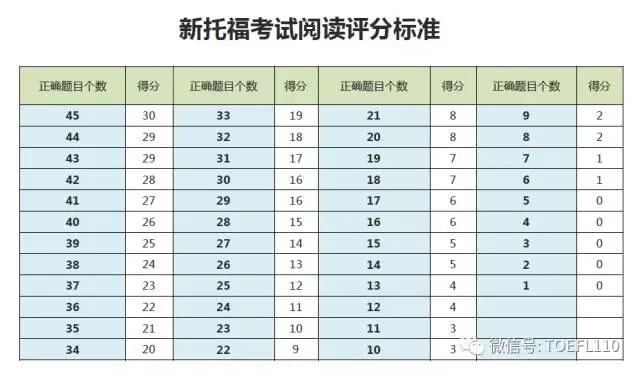解读托福阅读做题4大误区, 纠正答题思路提升得分率。今天小编给大家带来解读托福阅读做题4大误区,希望可以帮助到大家,下面小编就和大家分享,来欣赏一下吧。
解读托福阅读做题4大误区 纠正答题思路提升得分率
误区一“选择题,就是要用排除法”
这是一个常见的认知错误。要知道四个选项,有三个错误,只有一个正确的,且位置不定,毫无规律可循。试问,选错的概率比选对的概率高50%。所以,排除法并不好用。只有把选择题当做简答题做,即从原文中找到题干对应答案,再进行选择才是正确,而且往往阅读高手还可以节约掉不必要的阅读选项的时间。
选择题,不用排除法,而当做简答题完成。
误区二“标题是摆设,直接读文章”
这是流行在托福界的一个普遍的错误。如果标题真的没用,那么精于算计的American考官早就取消了。标题是一篇文章的主题所在,理解它,就可以预判文章的内容,甚至是结构。同时提升阅读兴趣,避免考试阅读疲劳症的出现。我的“严师高徒”班的同学们都可以证明这一点。
标题必须看,而且要预测文章基本结构和大体内容。
误区三“词汇题,只有增加词汇量才行”
同学,你out了。要知道在托福的词汇考核中,基本词汇量、构词法分析还有上下文推断是三个考点。意味增加词汇量,只能对基本词汇量和部分构词法词汇起到帮助,对上下文推断收效甚微,这就是为什么经常有考试词汇量大概10,000但是托福阅读仍旧还在24-26分徘徊的原因。所以,词汇理解必须基于句子结构搭配,以及上下文分析方可。当然,这种提升是针对要冲击28-30满分的学生的要求。目前分数还在18分左右的学员还是要增加更多的词汇,可千万不要把从文章中判断词义作为自己不积累词汇的借口呀。矫枉过正,适得其反。
词汇题,有时需要结合上下文理解,但是词汇量仍旧是基础。
误区四“最有一题,最后才看”
这种观点只有没有经验的菜鸟托福才这样想、并这样做。因为它的最终结果只会是浪费时间重读原文,或YY答案,其正确率根本没有保障。正确之道是先看,而非后看。因为最后一题要么要求总结文章段落大意,要么是分类填表。只有提前了解了题型和基本要求,才能在阅读时有的放矢,让文章阅读只做一遍。不必要的阅读时间缩短了,正确率才会提高。
托福阅读真题原题+题目
There are only a few clues in the rock record about climate in the Proterozoic eon. Much of our information about climate in the more recent periods of geologic history comes from the fossil record, because we have a reasonably good understanding of the types of environment in which many fossil organisms flourished. The scarce fossils of the Proterozoic, mostly single-celled bacteria, provide little evidence in this regard. However, the rocks themselves do include the earliest evidence for glaciation, probably a global ice age.
The inference that some types of sedimentary rocks are the result of glacial activity is based on the principle of uniformitarianism, which posits that natural processes now at work on and within the Earth operated in the same manner in the distant past. The deposits associated with present-day glaciers have been well studied, and some of their characteristics are quite distinctive. In 2.3-billion-year-old rocks in Canada near Lake Huron (dating from the early part of the Proterozoic age), there are thin laminae of fine-grained sediments that resemble varves, the annual layers of sediment deposited in glacial lakes. Typically, present-day varves show two-layered annual cycle, one layer corresponding to the rapid ice melting and sediment transport of the summer season, and the other, finer-grained, layer corresponding to slower winter deposition. Although it is not easy to discern such details in the Proterozoic examples, they are almost certainly glacial varves. These fine-grained, layered sediments even contain occasional large pebbles or dropstones, a characteristic feature of glacial environments where coarse material is sometimes carried on floating ice and dropped far from its source, into otherwise very fine grained sediment. Glacial sediments of about the same age as those in Canada have been found in other parts of North America and in Africa, India, and Europe. This indicates that the glaciation was global, and that for a period of time in the early Proterozoic the Earth was gripped in an ice age.
Following the early Proterozoic glaciation, however, the climate appears to have been fairly benign for a very long time. There is no evidence for glaciation for the next 1.5 billion years or so. Then, suddenly, the rock record indicates a series of glacial episodes between about 850 and 600 million year ago, near the end of the Proterozoic eon.
1. Which of the following does the passage mainly discuss?
(A) How patterns in rock layers have been used to construct theories about the climate of the
Proterozoic age
(B) What some rare fossils indicate about glacial conditions during the late Proterozoic age
(C) The varying characteristics of Proterozoic glacial varves in different parts of the world
(D) The number of glacial episodes that the Earth has experienced since the Proterozoic age
2. According to the passage , the fossil record of the Proterozoic eon is
(A) highly regarded because it preserves the remains of many kinds of organisms
(B) less informative than the fossil record of more recent periods
(C) very difficult to interpret due to damage from bacteria
(D) more useful to researchers than otheraspects of the rock record
3. The word scarce in line 4 is closest in meaning to
(A) ancient
(B) tiny
(C) available
(D) rare
4. It can be inferred from the passage that the principle of uniformitarianism indicates that
(A) similar conditions produce similar rock formations
(B) rock layers in a given region remain undisturbed over time
(C) different kinds of sedimentary rocks may have similar origins
(D) each continent has its own distinctive pattern of sediment layers
5. The word resemble in line 14 is closest in meaning to
(A) result from
(B) penetrate
(C) look like
(D) replace have similar origins
6. According to the passage , the layers in varves are primarily formed by
(A) fossilized bacteria
(B) pieces of ancient dropstones
(C) a combination of ancient and recent sediments
(D) annual cycles of sediment transport and deposition
7. The phrase the other in line 17 refers to another
(A) annual cycle
(B) glacial lake
(C) layer of sediment
(D) season
8. According to the passage , the presence of dropstones indicates that
(A) the glacial environment has been unusually servere
(B) the fine-grained sediment has built up very slowly
(C) there has been a global ice age
(D) coarse rock material has been carried great distances
9. Why does the author mention Canada, North America, Africa, India, and Europe in lines 23-24?
(A) To demonstrate the global spread of dropstones
(B) To explain the principles of varve formation
(C) To provide evidence for the theory that there was a global ice age in the early Proterozoic eon
(D) To illustrate the varied climatic changes of the Proterozoic eon in different parts of the globe
10. Which of the following terms is defined in the passage ?
(A) fossil record (line 3)
(B) laminae (line 13)
(C) varves (line14)
(D) glacial episodes (line 28)
PASSAGE 92 ABDAC DCCCC
托福阅读真题原题+题目
In 1900 the United States had only three cities with more than a million residents — New York, Chicago, and Philadelphia. By 1930, it had ten giant metropolises. The newer ones experienced remarkable growth, which reflected basic changes in the economy.
The population of Los Angeles (114,000 in 1900) rose spectacularly in the early decades of the twentieth century, increasing a dramatic 1,400 percent from 1900 to 1930. A number of circumstances contributed to the meteoric rise of Los Angeles. The agricultural potential of the area was enormous if water for irrigation could be found, and the city founders had the vision and dating to obtain it by constructing a 225-mile aqueduct, completed in 1913, to tap the water of the Owens River. The city had a superb natural harbor, as well as excellent rail connections. The climate made it possible to shoot motion pictures year-round; hence Hollywood. Hollywood not only supplied jobs; it disseminated an image of the good life in Southern California on screens all across the nation. The most important single industry powering the growth of Los Angeles, however, was directly linked to the automobile. The demand for petroleum to fuel gasoline engines led to the opening of the Southern California oil fields, and made Los Angeles North America's greatest refining center.
Los Angeles was a product of the auto age in another sense as well: its distinctive spatial organization depended on widespread private ownership of automobiles. Los Angeles was a decentralized metropolis, sprawling across the desert landscape over an area of 400 square miles. It was a city without a real center. The downtown business district did not grow apace with the city as a whole, and the rapid transit system designed to link the center with outlying areas withered away from disuse. Approximately 800,000 cars were registered in Los Angeles County in 1930, one per 2.7 residents. Some visitors from the east coast were dismayed at the endless urban sprawl and dismissed Los Angeles as a mere collection of suburbs in search of a city. But the freedom and mobility of a city built on wheels attracted floods of migrants to the city.
1. What is the passage mainly about?
(A) The growth of cities in the United States in the early 1900's
(B) The development of the Southern California oil fields
(C) Factors contributing to the growth of Los Angeles
(D) Industry and city planning in Los Angeles
2. The author characterizes the growth of new large cities in the United States after 1900 as
resulting primarily from
(A) new economic conditions
(B) images of cities shown in movies
(C) new agricultural techniques
(D) a large migrant population
3. The word meteoric in line 6 is closest in meaning to
(A) rapid
(B) famous
(C) controversial
(D) methodical
4. The word it in line 8 refers to
(A) aqueduct
(B) vision
(C) water
(D) agricultural potential
5. According to the passage , the most important factor in the development of agriculture around
Los Angeles was the
(A) influx of new residents to agricultural areas near the city
(B) construction of an aqueduct
(C) expansion of transportation facilities
(D) development of new connections to the city's natural harbor
6. According to the passage , the initial success of Hollywood' s motion picture industry was due
largely to the
(A) availability of many skilled workers
(B) beauty of the countryside
(C) region's reputation for luxurious lifestyles
(D) region's climate and good weather
7. It can be inferred from the passage that in 1930 the greatest number of people in the Los
Angeles area were employed in
(A) farming
(B) oil refining
(C) automobile manufacturing
(D) the motion picture industry
8. According to the passage , the Southern California oil fields were initially exploited due to
(A) the fuel requirements of Los Angeles' rail system
(B) an increase in the use of gasoline engines in North America
(C) a desire to put unproductive desert land to good use
(D) innovative planning on the part of the city founders
9. The phrase apace with in line 21 is closest in meaning to
(A) anew with
(B) apart from
(C) as fast as
(D) at the middle of
10. It can be inferred from the passage that the spatial organization of Los Angeles contributed to
the relative decline there of
(A) public transportation
(B) industrial areas
(C) suburban neighborhoods
(D) oil fields
11. The visitors from the east coast mentioned in the passage thought that Los Angeles
(A) was not accurately portrayed by Hollywood images
(B) lacked good suburban areas in which to live
(C) had an excessively large population
(D) was not really a single city
PASSAGE 93 CAACB DCBCA D
解读托福阅读做题4大误区
纠正答题思路提升得分率。今天小编给大家带来解读托福阅读做题4大误区,希望可以帮助到大家,下面小编就和大家分享,来欣赏一下吧。解读托福阅读做题4大误区 纠正答题思路提升得分率误区一“选择题,就是要用排除法”这是一。下面小编给大家分享解读托福阅读做题4大误区,希望能帮助到大家。 解读托福阅读做题4大误区文档下载网址链接:
上一篇:雅思阅读高分的18个贴士
下一篇:托福阅读难点题型解题思路实例讲解






